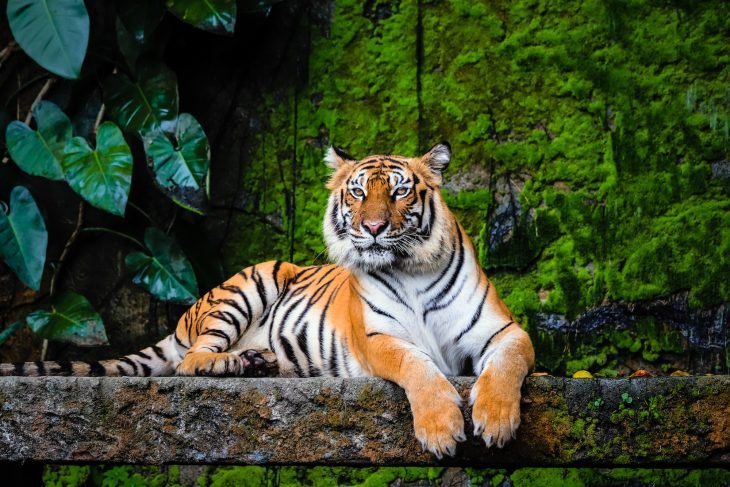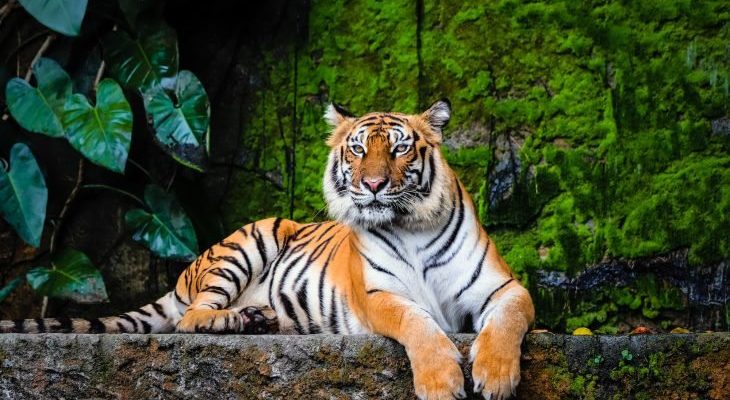
The Bengal tiger is more than just a majestic animal roaming the jungles of India; it’s woven into the fabric of many cultures. From ancient texts to modern films, its influence is everywhere. The stories told about the tiger often reflect deeper themes—like strength, danger, and the beauty of nature—making it a powerful figure that speaks to our shared human experience. Let’s explore how the Bengal tiger has been represented in different cultures and the folklore surrounding this magnificent creature.
The Bengal Tiger in Indian Mythology
In India, the Bengal tiger holds a place of reverence and awe. It’s often seen as a symbol of power and grace. In Hindu mythology, the tiger is associated with several deities, most notably the goddess Durga. Imagine this fierce goddess riding a tiger into battle, embodying the idea of strength combined with beauty. This imagery highlights how revered the Bengal tiger is in Indian culture; it represents not only ferocity but also protection and virtue.
Additionally, tales from Indian folklore often depict tigers as wise creatures. Stories vary from the noble protector of the jungle to a trickster teaching humans lessons. For instance, there’s a popular fable about a tiger and a clever rabbit. The rabbit consistently outsmarts the tiger, conveying the message that wit can overcome brute strength. This duality—power versus intelligence—adds depth to how people view the Bengal tiger in cultural storytelling.
Bengal Tigers in Literature and Art
The influence of the Bengal tiger extends into literature and art, where it often symbolizes wild beauty and danger. Many authors have used the tiger as a character in their stories to evoke feelings of awe or fear. Take *Life of Pi*, for example. The tiger named Richard Parker isn’t just a pet; he represents survival, the struggle of existence, and the thin line between man and nature. The way the tiger is portrayed creates a powerful contrast that leaves readers with lingering questions about life and human nature.
In terms of visual art, the Bengal tiger has been a popular subject for centuries. Artists often depict it in lush landscapes, emphasizing its natural habitat. The stunning contrast between the tiger’s vibrant fur and the greenery around it captivates viewers. These artistic representations convey a sense of majesty and mystery, urging people to appreciate the beauty of nature and the need for conservation.
Tigers in Asian Folklore and Culture
In various Asian cultures, the tiger is often a central figure in folklore. For instance, in Chinese culture, the tiger symbolizes bravery and protection. Known as one of the Four Great Beasts, it stands alongside the dragon, phoenix, and tortoise. Many people believe that wearing tiger-themed accessories or clothing can bring good luck and ward off evil spirits. It’s fascinating how the same animal can carry such different meanings in different cultures, yet still embody strength and vitality.
Moreover, the tiger appears in numerous fables and stories throughout Asia. In Korean folklore, there’s a tale about a tiger who wanted to tame a little girl. While it may sound frightening, the story highlights themes of understanding and unlikely friendships. Such stories reflect the tiger’s dual nature, not just as a predator, but also as a creature capable of connection and transformation.
Environmental Symbolism of Tigers
The Bengal tiger isn’t just a cultural icon; it’s also a powerful symbol of environmental conservation. As an apex predator, the tiger plays an essential role in maintaining the balance of its ecosystem. When tigers roam the forests, they help control the population of herbivores, which in turn allows plant life to thrive. This delicate balance is crucial for the health of the jungle, and losing the tiger could signal broader ecological issues.
Organizations around the world use the tiger’s image to raise awareness about wildlife preservation. You might have seen campaigns where the Bengal tiger is front and center, showcasing the urgency of protecting these magnificent creatures. It’s a poignant reminder that the fate of the tiger is intertwined with the health of its habitat, and thus with our own future as well.
The Bengal Tiger in Folklore of Indigenous Tribes
Indigenous tribes in regions like India and Southeast Asia have their unique takes on the Bengal tiger. For many, the tiger is not just an animal; it’s a spiritual being—an embodiment of their land’s soul. Tribal stories often explain how humans and tigers share mutual respect, showcasing a deep understanding of nature’s rhythms. In some tales, the tiger is a guardian spirit that watches over the tribe, reminding them of nature’s balance.
These stories can teach valuable lessons about living harmoniously with wildlife. For example, in certain tribal cultures, it’s believed that hunting a tiger without proper rituals will bring misfortune. This reflects a respect for the animal and a recognition of its importance in the ecosystem. These narratives often highlight a spiritual connection to the land that many urbanized cultures might overlook.
Modern Representations in Media and Films
In recent years, the Bengal tiger has made a significant impact on modern media and films. Movies like *The Jungle Book* and *Life of Pi* have brought the tiger into popular culture, introducing it to younger audiences. These portrayals often emphasize the tiger’s beauty while also revealing its wild nature, striking a balance that resonates with viewers.
Animated films sometimes give tigers human-like characteristics, allowing them to connect with audiences on a deeper level. This personification creates a sense of empathy, encouraging viewers to appreciate these majestic animals. However, it’s important to remember that while these portrayals are entertaining, they often simplify the complexities of the animal’s real-life behaviors and the challenges they face.
The representation of the Bengal tiger in culture and folklore is rich and varied. It encapsulates themes of strength, wisdom, and the delicate balance within nature. Whether depicted in ancient myths, modern literature, or films, the Bengal tiger continues to inspire awe and respect. As we navigate our relationship with nature, remembering the profound cultural significance of this remarkable creature is crucial.
Understanding the stories we tell about the Bengal tiger helps us appreciate not just the animal itself, but the values we place on strength, resilience, and harmony with the environment. It encourages a broader dialogue about conservation and the responsibilities we hold in protecting these majestic beings for future generations. So the next time you hear a story about a Bengal tiger, think about the deeper lessons it might offer.

